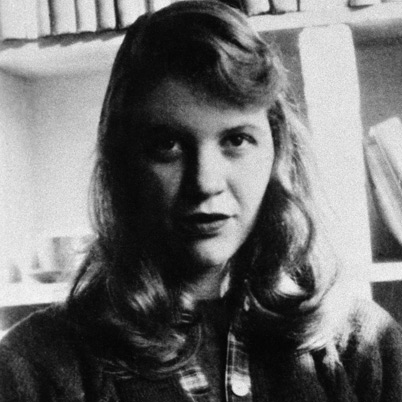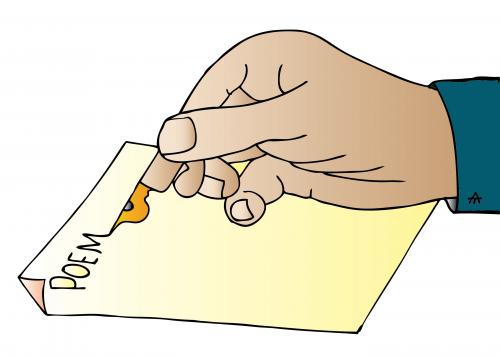About Sylvia Plath:
Sylvia Plath was born in 1932 in Boston, Massachusetts, US. She showed the makings of a poet an artist starting from an early age. She published her first poem as an eight year old. Her father died when she was about eight years old which led her to have ambivalent feelings towards religion, and which would later become one of the causes of her depression. Due to these traumas, her poetry mainly remained as confessional poetry. Her notable works include The Bell Jar and Ariel. She was the recipient of Pulitzer Prize for Poetry, though it was posthumous. A poet, novelist and short story writer, Sylvia Plath committed suicide in the year 1963.
About The Applicant:
The Applicant is a poem in Ariel, one of the most notable works of Plath. It was published in 1965, two years after her death. This poem is humorous and dark at the same time containing tones of satire and feminism.
Setting of The Applicant:
The poem is set in some sort of office. This is seen, both by the title of the poem which implies that an application is being submitted somewhere, and by the starting lines of the poem, which is in the form of an interview, which usually takes place in an office.
Poetic Devices in The Applicant:
Stanza:
The poem is written in 8 stanzas of 5 lines each.
Rhyme:
There is no rhyme scheme as such but there are a lot of internal rhymes. Stanza 5 comes the closest to having a rhyme scheme.
Repetition:
There are many repetition throughout the poem. ‘Marry it’ alone is repeated for more than 4 times. Then ‘talk’ is repeated in the 7th stanza’s last time.
Imagery:
There is some pretty vivid imagery throughout the poem. Right from stanza 1, there is imagery and it reaches a high in the description of the woman the interviewer calls out of the closet.
Synecdoche:
When the interviewer says, ‘here is a hand’ in stanza 2, he is referring to a woman. Using a part to refer to the whole; that is synecdoche.
Summary of The Applicant:
The poem starts with a interviewer asking an applicant if he/she has anything missing. It is later determined that the applicant is a ‘he’. The applicant has everything but a hand to hold his hand i.e., he does not have a wife. The applicant is pretty desperate to acquire a wife. This is seen by his crying when asked what was missing.
The interviewer seeing this gives the applicant a hand, a hand which brings him tea, soothes him, and generally do whatever he tells it to. The hand will shut his eyes close at the end of a tiring day and dissolve him of sorrow.
Then the interviewer asks if the applicant is ready for a marriage. Marriage comes with a responsibility that is permanent, which cannot be destroyed, and which must be carried to the grave. Then he says that the applicant head is a bit empty and to fill it, he calls from a closet a woman. He dehumanises the woman and calls her ‘it’ throughout, saying how she has all the qualities of a good wife.
She can complete him. And the applicant has no choice but to accept her. So will you marry ‘it’ the interviewer says.
Analysis of The Applicant:
The poem begins with a person asking the applicant the sort of person he/she is. At this point, it is unclear as to the gender of the applicant. The interviewer asks if the applicant has a glass eye, a false teeth, a crutch, a brace, a hook, rubber breasts or rubber crotch. All of these things are things a person has if he has something missing. The interviewer, in short, is asking the applicant if he/she has something missing.
The applicant replies in the negative. If he has nothing missing, then how can we give you anything, the interviewer asks. The applicant starts crying. Then as if struck by an idea, the interviewer asks the applicant to open his/her hand; and seeing that it was empty, the interviewer gives the applicant a hand. This is a synecdoche. Hand here refers to a man/woman suitable to the applicant. If we consider stereotypes, when the applicant starts crying, we can assume that the applicant was a ‘she’.
But this stereotype is blown away in the next stanza when the interviewer tells the applicant the hand can bring him (yes, him) tea, roll away his headaches; all ‘duties’ of a wife. So the applicant in question in this stanza becomes a ‘he’. The interviewer tells that that ‘hand’ will do whatever you tell it to.
It (the hand, the wife) will shut his eyes at the end of the day and dissolve his sorrows. The interviewer says the applicant is start naked. It is not meant literally, but it implies that as of then he was free from responsibilities, responsibilities of marriage. Then the interviewer offers him a suit. A suit is a symbol of responsibility; be it either at work or in a marriage. Wearing it means that one should shoulder the duties that come with it.
The interviewer, the speaker of the poem asks the applicant if he was willing to marry it. Here the meaning of it changes from the wife to the suit; meaning the speaker is asking the applicant if he was ready to shoulder some responsibility. He describes the suit as ‘black and stiff, but not a bad fit’. Here ‘black and stiff’ can be said are used referring indirectly to marriage. The interviewer is saying that once married life becomes stiff. Then he says the suit is waterproof, shatterproof, fireproof and bomb-proof. He means to say that whatever may come, once he wears on the suit he is accepting responsibility permanently. He must take this responsibility to his grave (they’ll bury you in it).
Then the speaker speaks of the applicant’s head which he says is empty. But worry not, he says, I have a solution for that too. Saying so, she calls a woman (sweetie) out of a closet. ‘Closet’ here refers to the situation of the woman in the then years. The speaker asks the applicant ‘what do you think of that’. Here she is referred to as ‘that’. The speaker is dehumanising a woman. This further goes to show the treatment of woman at the time the poem was written. The speaker says that she (the woman) is naked to start.
The dehumanisation continues in the next stanza when the speaker says that the woman will be silver in 25 and gold in 50 years. The years indicate the anniversary of marriage. A living doll, the speaker calls the woman. And he continues to refer to her as ‘it’ listing out all the qualities ‘it’ has, implying that she would make a ‘good’ wife.
The speaker ends the poem by saying that ‘it’ (the woman) works perfectly fine. If the applicant has a hole, she will soothe it. If he has an eye, she will become the image. She is the last resort of the applicant (we can tell the applicant is pretty desperate to find a wife, going by how he cries in the beginning). So, the speaker asks if the applicant is willing to marry ‘it’. The last is not a question but a compulsion.
The poem is a monologue. The interview, who is the speaker of the poem talks and the applicant listens. This poem is a satire on the then situation of women.
Central Idea of The Applicant:
The central idea of the poem is to showcase the plight of women in the 1960s, the time In which this poem was written.
Tone of The Applicant:
The tone of the poem is satirical and humorous, but in a dark way. Under the light façade lies a deep and dark meaning.
Conclusion
Sylvia Plath succeeds in invoking thought and introspection with this poem; a powerful reflection of the ghastly plight of the women in the 1960s.
Contributor: Uttej Reddy
Some online learning platforms provide certifications, while others are designed to simply grow your skills in your personal and professional life. Including Masterclass and Coursera, here are our recommendations for the best online learning platforms you can sign up for today.
The 7 Best Online Learning Platforms of 2022
- Best Overall: Coursera
- Best for Niche Topics: Udemy
- Best for Creative Fields: Skillshare
- Best for Celebrity Lessons: MasterClass
- Best for STEM: EdX
- Best for Career Building: Udacity
- Best for Data Learning: Pluralsight















